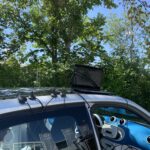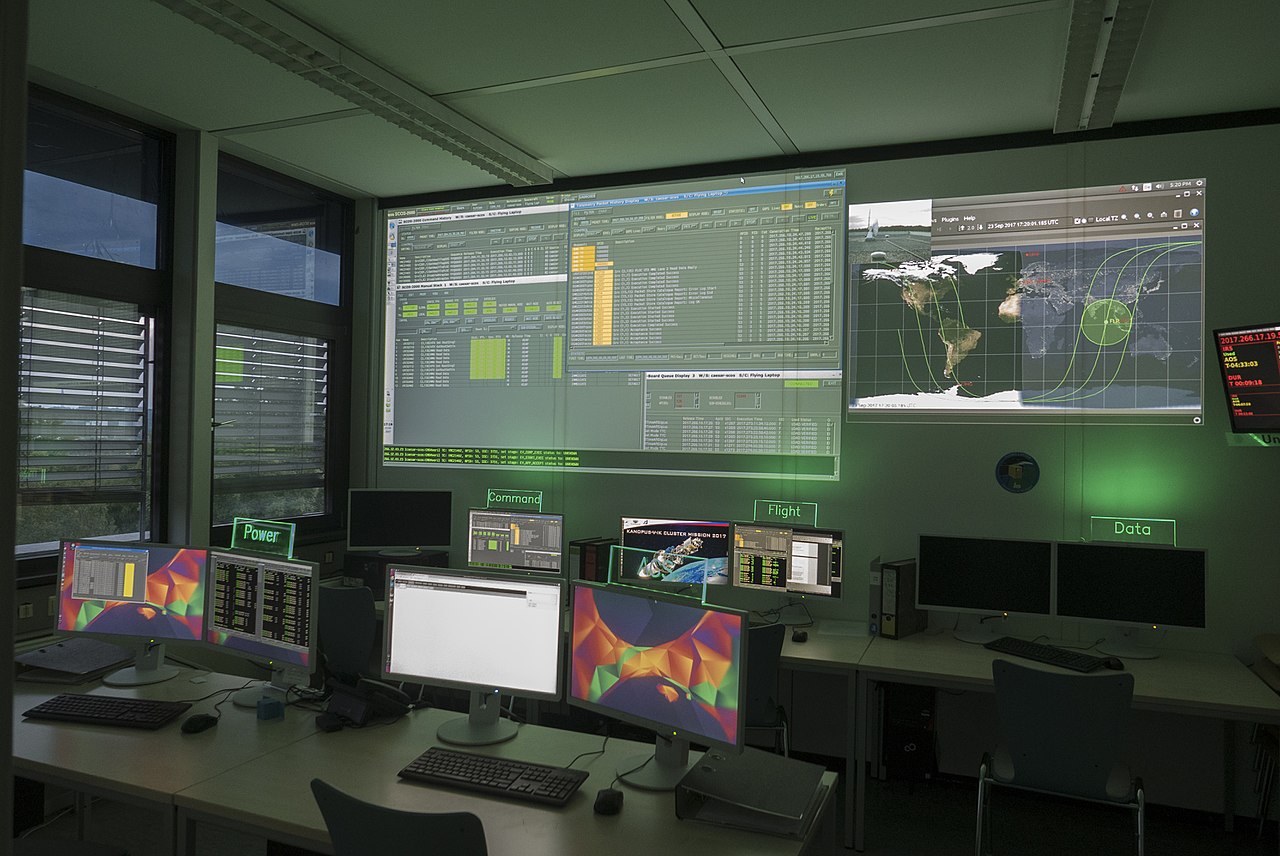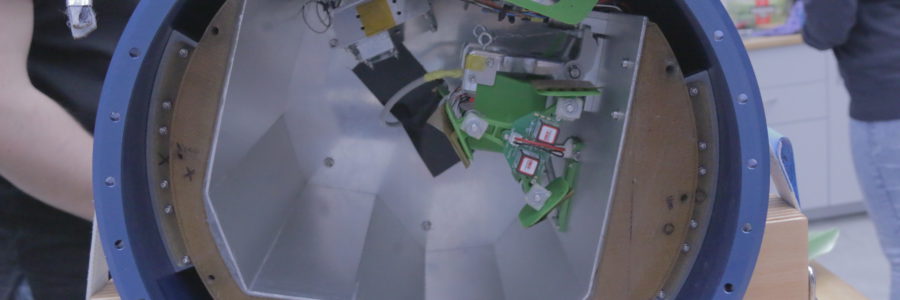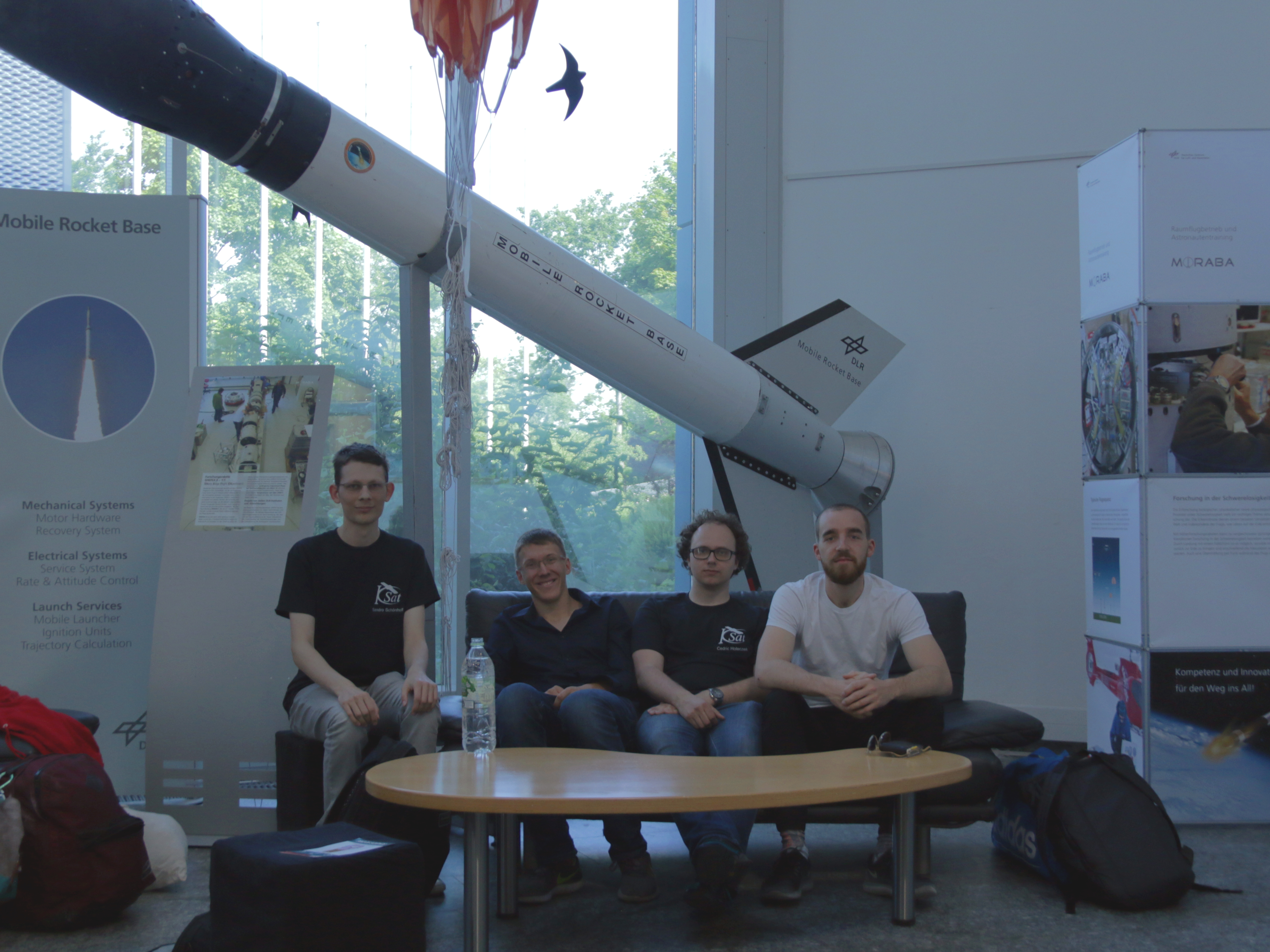Category: Allgemein-EN
Newsletter 2021
SOURCE Completes Critical Design Review
BUBBLE 2 successfully launched!
On June 17, 2021, the long-awaited day had come, BUBBLE 2 could finally launch after a year’s delay due to Corona!
30°C outside temperature in Stuttgart and the team gathered, with negative Corona tests, at the university in Vaihingen to do the last preparations for the balloon launch. Changing batteries, preparing the ropes, gondola and parachute and to finish setting up the ground station. In the process, the software from the mobile ground stations still had to be set up on enough laptops so that tracking of the balloon was possible in each of the three tracking cars.
Around 12:30 the preparations were finished, all things were packed and the gondola and the helium were brought to the launch site. There the team set up a pavilion for some protection from the sun and started to assemble the gondola and check all the functions. At the same time, the balloon was filled. Shortly before 4 pm everything was ready and BUBBLE 2 was launched.
A flight time of roughly 3 hours was calculated with an approximate landing site north of Bretten. On a windless day the balloon does not fly too far away, which makes the chase more comfortable, so there was enough time for cleaning up, filling the water bottles and eating an ice cream before setting out. Using the tracking systems integrated in the gondola, the position of BUBBLE 2 could now be pinpointed and the flight route followed. Both the mobile and stationary ground stations were able to receive good data. At an altitude of almost 36km, the balloon burst and the gondola fell in free fall until the parachute was able to brake in the denser atmosphere. BUBBLE 2 glided gently to the ground at 5 m/s for the last few kilometers. The cars drove to the approximate landing site from different directions to increase the chance of recovering the gondola quickly. This is important if, for example, there is a river nearby to be able to rescue the systems in time.
All three chase cars had gathered near the expected landing site shortly before the landing and one of them could even watch the gondola descending. It was an unspectacular landing in the field, far away from roads and towns and during recovery no damage to the gondola or electronics could be detected. So it was a successful flight.
The entire flight was filmed by our GoPro, provides stunning footage and can be viewed in full on Youtube.
The data evaluation now also brings BUBBLE 3 a lot further, as we now know which of our systems worked well and where there are still weak points. Our goal to develop a plug-and-play system for high-altitude balloons, has come a lot closer this day!

BUBBLE 2 gondola is being prepared for launch 
test of the ground stations 
with the water canister the lift is measured 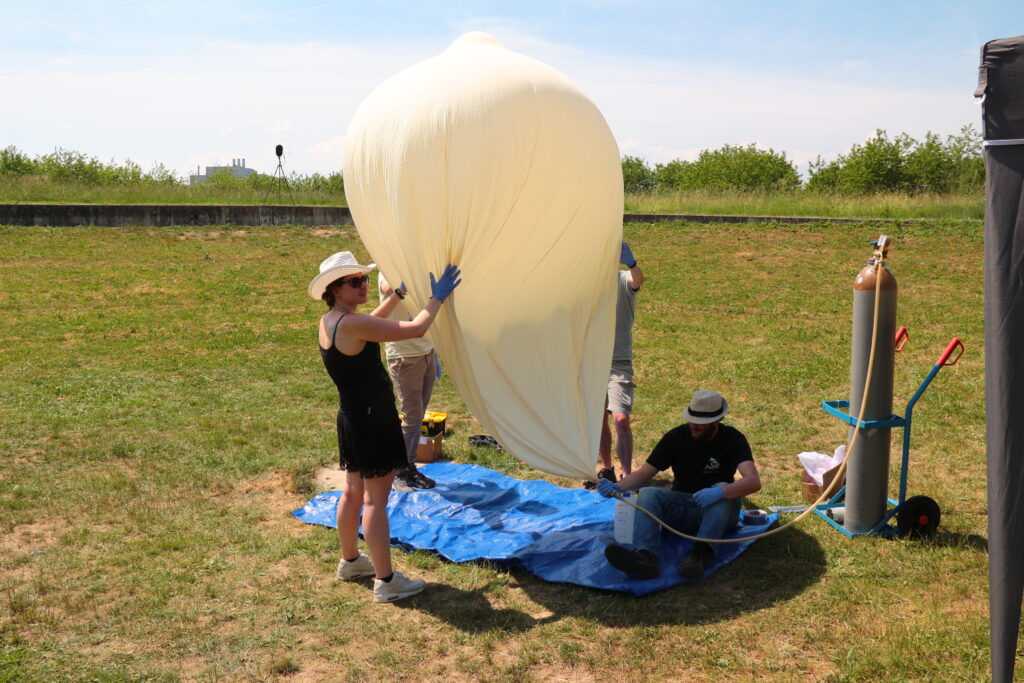
balloon being filled with helium 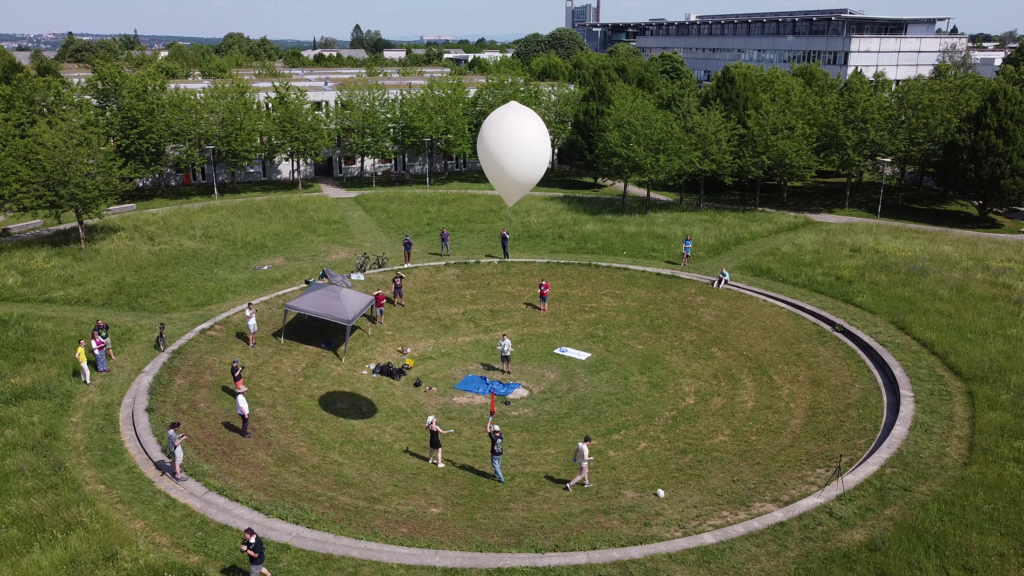
liftoff 
balloon with parachute, gondola and radiosonde 
shortly after liftoff 
Campus Vaihingen 
Stuttgart, Vaihingen and the airport 
Autobahn intersection Stuttgart and Böblingen/Sindelfingen 
airplane 
condensation trail of the airplane 
Stuttgart from ca. 15 km altitude 
the river Neckar and the city of Heilbronn 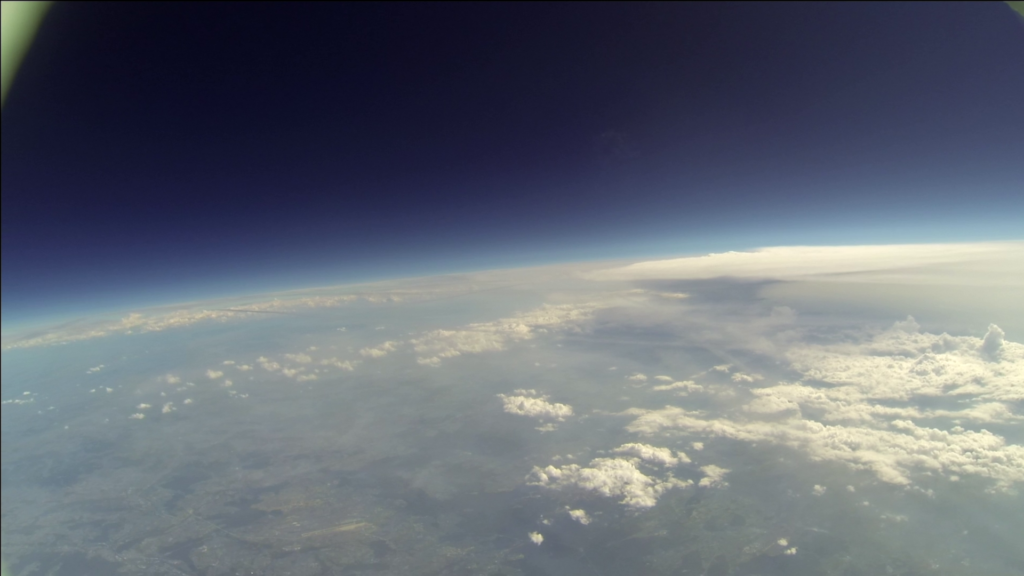
thunderstorm during ascent 
shortly before the burst of the balloon at 35 km altitude 
balloon bursts at 36 km altitude 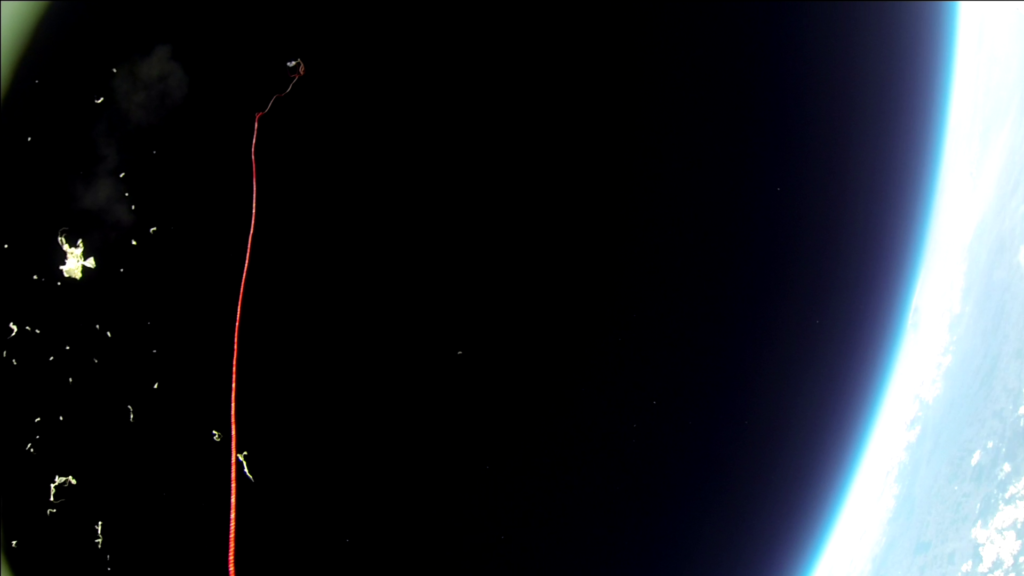
radiosonde at the end of the red rope 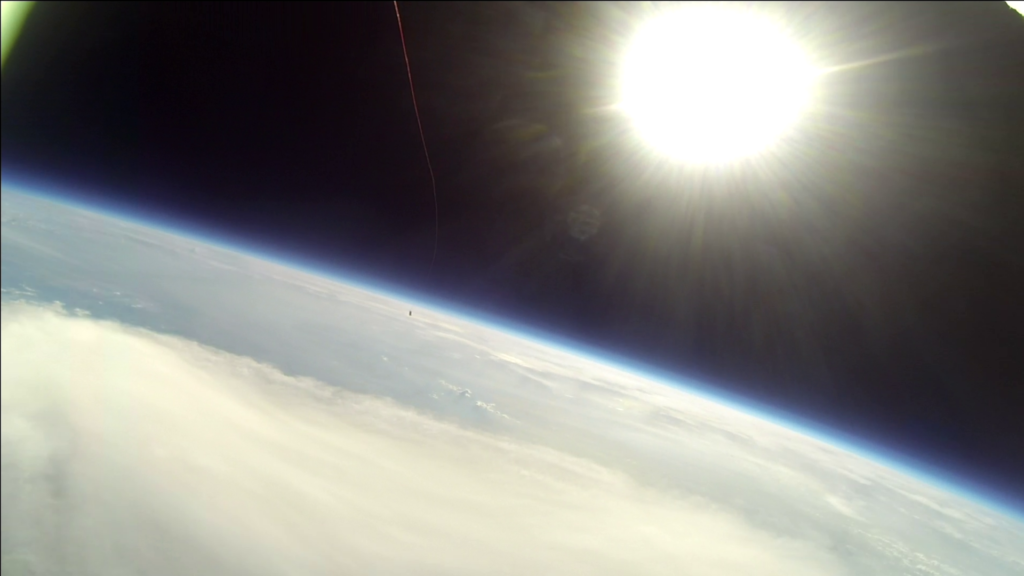
gondola and radiosonde in free fall 
thunderstorm during descent 
a few minutes before touchdown 
visual contact to a chase car 
shortly before touchdown 
touchdown in a field 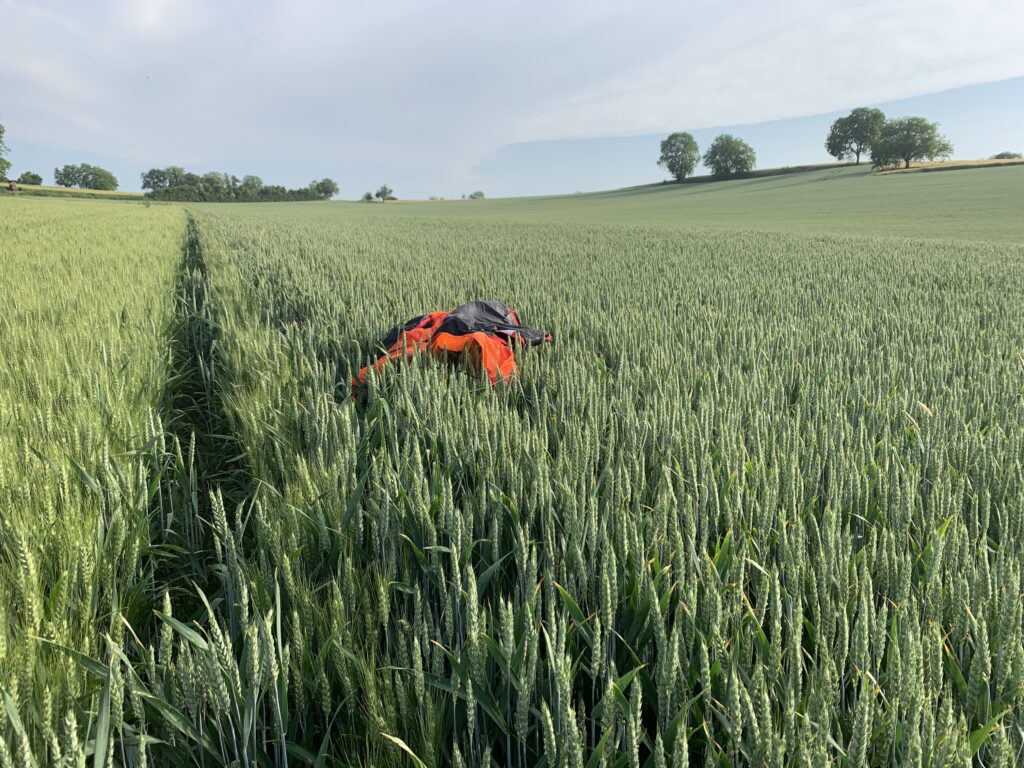
parachute in the field 
successful recovery 
gondola after successful flight 
the BUBBLE team after successful recovery
BUBBLE 2 successfully performed its system test – ready for launch!
As temperatures are rising, and winter winds are finally gone, BUBBLE 2 has successfully performed its system test – a critical milestone in the launch preparations. During the 2.5 hour long test run, every functionality such as a strong radio down link connection, battery performance and reliable data recording was tested, and no issues were found. Additionally, the team took the opportunity to work on final launch preparations. A final launch date is yet to be chosen and will be selected quite spontaneous as the launch is dependent on good weather and a promising flight track prediction – however, the team is looking for a launch in June 2021.
BUBBLE is the very own high-altitude program and balloon of the Small Satellite Student Society of the University of Stuttgart. BUBBLE 2 is, similar to the flight of BUBBLE 1, equipped with a sky brightness sensor which is an experiment performed in cooperation with the Institute of Space Systems at the University of Stuttgart. The high altitude balloon will lift a 2 kg gondola carrying the experiment to a maximum altitude of approximately 35,000 m where the balloon will burst and the gondola starts to descend safely on a parachute. The BUBBLE team on the ground will receive radio transmissions from the balloon to localize and recover the gondola after landing.














